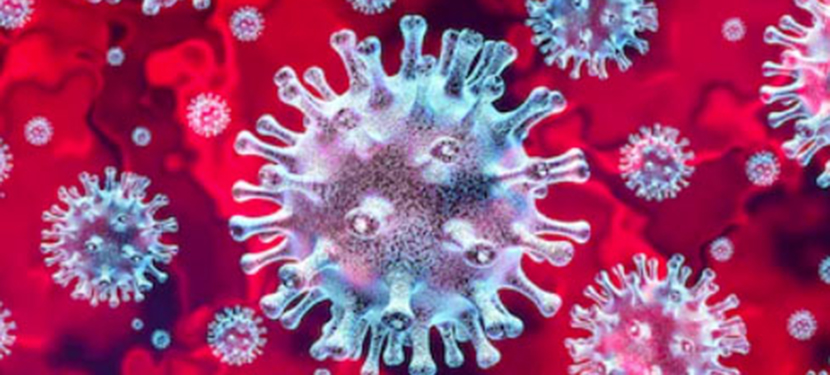The recent global outbreak of another RNA Coronavirus strain from China, COVID 19, like its more virulent cousins, SARS, and the Middle Eastern version MERS, has once again created a heightened awareness and fear among both personal and business travelers.
COVID 19, as we know, emerged from the Wuhan province of China sometime last mid-to-late Fall of 2019. Like its SARS relative, it jumped from other mammals like Bats, to humans. While its virulence is far below SARS and MERS, it appears to be far more infectious. This higher infectious nature leads to concerns in crowded scenarios of traveling, particularly commuter and long-haul trains, cruise ships, airline terminals, and airplanes for the traveling public.
Since cruise ships are enclosed systems for prolonged time periods with basic ventilation systems, and a myriad of inanimate environmental contact points, the US regulatory authorities like CDC and NIH have strongly advised against using cruise ships. Particularly since like SARS, the most vulnerable groups are the elderly, and immunocompromised, and this demographic group remains the largest in the cruise ship industry. Meanwhile, the level of transference of COVID 19 remains unknown on commuter rail and long-haul rail like AMTRAK, but similar dynamics exist especially for long-haul rail travelers.
Therefore, our focus for Mitigation of COVID 19 will be on airline travel. However, these mitigation recommendations are equally applicable to rail travel as well, especially long haul.
As the CDC has recommended, the highest risk groups are the elderly and immunocompromised. While the risk increases exponentially above 60 years old, the elder individuals with pre-existing heart, pulmonary, and immune conditions/deficiencies, are the most vulnerable. In fact, both globally and in the US, the mortality rate is most pronounced for individuals above 80 years old. So, these high-risk groups should refrain both from air travel and rail travel. They should also not mingle with adolescents and young children since COVID 19 is asymptomatic in these age brackets, but they can easily infect the vulnerable aging and high-risk populations.
What are the most prudent and reliable mitigation strategies for the casual and business traveler?
Do not wear a N95 mask if you exhibit no sign of a cold, flu or COVID 19 symptoms. It will not prevent you from acquiring COVID 19, which transmits via respiratory droplets from coughing and sneezing onto faces, mouths, and eyes. As an adjunct to this, if you have any flu-like or cold symptoms, you should refrain from travel unless it is necessary. The ill travelers are the individuals who should properly wear, and maintain a N95 respirator mask when traveling to protect their neighboring travelers.
- Properly wash your hands with soap and warm water for at least 20 seconds and use clean disposable paper towels to dry. You do not need an antibacterial soap. A clean regular bar or liquid soap is effective. Air dryers are not as effective, and will dry out your dermal layers.
- Have sufficient disinfectant wipes on you. You do not need to take a whole canister, but have a sufficient number placed into a quart or gallon zip lock plastic bag. Utilize the wipes for your head rests, seat handles, trays and for restroom knobs and handles on your airline or train seat. COVID 19 can remain viable for a number of days on non-disinfected inanimate/ environmental surfaces.
- Refrain from using hard to disinfect porous blankets, and head cushions on trains or airline flights.
- On airlines, the air is HEPA filtered, so open the air vent and have it blowing on you during your flight. This will create a positive pressure in your inhalation zone to keep harmful viruses and microbes from entering your “air space”.
- When using the airline or train restroom, ensure you do not touch your face at all. Once done in the restroom, after proper hand washing, take a paper towel to handle the door handles or panels.
- Utilize an approved hand sanitizer when hand washing is not an option. As with hand washing, you must expose the webs of your hands, fingernails, and cuticles to the hand sanitizer. While the alcohol-based sanitizers are highly effective versus this virus, and will de-activate it, alcohol does dry out hands with frequent use. So, have an effective hand lotion without fragrance, to periodically moisturize hands to prevent dermatitis, etc. Dermatitis may result in Staph shedding.
- Utilize disinfectant wipes on your cell phone during the journey, and after deplaning. Do the same when entering your hotel room, to the TV remote, the desk, and all door knobs. Do likewise when re-entering your room daily after work. These practices are good to do at home as well!
- Get proper sleep, proper nutrition and adequate Vitamin C using chews several times per day (250 mg doses), along with Vitamin D chews or other digestible forms (1000 IU), and Elderberry-Zinc chews or lozenges, all to keep your immune system in top condition.
CDC is now stressing we are in the mitigation phase for COVID 19. South Korea is a good example for North America due to the high population density, high level of cases, robust detection program, and health care system. As of March 9th, South Korea had 7,382 confirmed cases of COVID 19 with 51 fatalities for a 0.69 % mortality rate. https://www.statista.com/statistics/1095848/south-korea-confirmed-and-suspected-coronavirus-cases/
The current Influenza strain has resulted in roughly 23 million cases, 50,000 hospitalizations, and 20,000 fatalities in the US this flu season even with the available flu vaccine! https://www.cdc.gov/flu/weekly/index.htm
Meanwhile the hardier Norovirus, the most common global and US food-borne disease, results in 23 million cases, 50,000 hospitalizations, and 310 deaths in the U.S according to CDC. Globally, Norovirus kills roughly 50,000 children annually. https://wwwnc.cdc.gov/eid/article/19/8/13-0465_article. https://www.cdc.gov/norovirus/trends-outbreaks/worldwide.html
So, let’s be vigilant, protect the high-risk groups and practice proper hygiene mitigation measures, while keeping everything in proper perspective.

